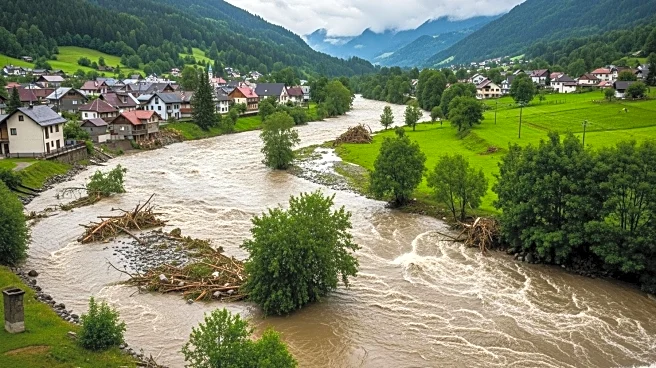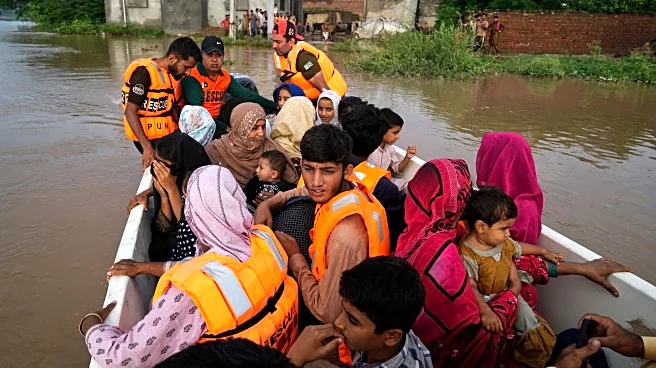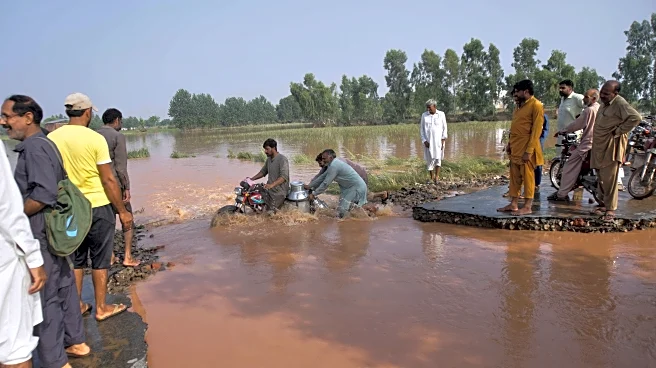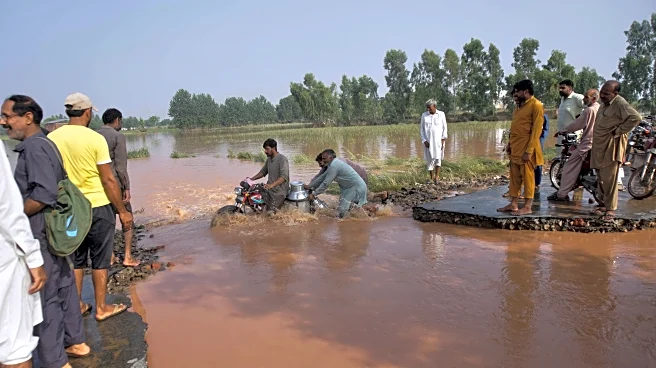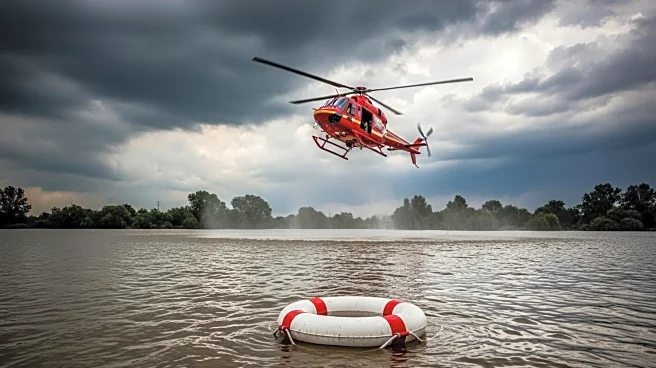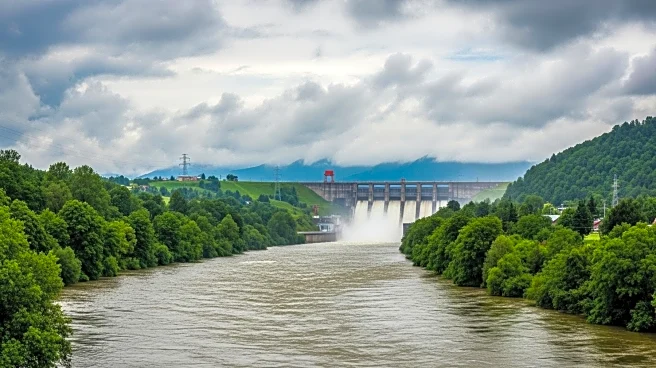What is the story about?
What's Happening?
Severe flooding in Pakistan's eastern Punjab province has displaced nearly 250,000 people, affecting over 1 million individuals. The floods were caused by heavy rains and the release of water from overflowing dams in India, leading to the bursting of three major rivers. At least 15 people have died, and the floods have impacted 1,432 villages, destroying crops and businesses. Relief efforts include the establishment of nearly 700 relief and 265 medical camps. The floods have killed over 800 people in Pakistan since late June, marking the worst flood emergency in decades.
Why It's Important?
The flooding in Pakistan highlights the vulnerability of regions to extreme weather events, exacerbated by climate change. The displacement of hundreds of thousands of people and the destruction of infrastructure and agriculture have significant humanitarian and economic implications. The situation underscores the need for improved disaster preparedness and international cooperation in managing transboundary water resources. The floods also raise concerns about water management practices and the impact of climate change on regional stability.
What's Next?
Continued rainfall is expected, potentially worsening the flood situation. Relief efforts will focus on providing food, medical aid, and shelter to affected populations. The Pakistani government may seek international assistance to manage the crisis and address long-term infrastructure and water management challenges. The situation may prompt discussions on regional cooperation and water treaty compliance between India and Pakistan.
Beyond the Headlines
The floods in Pakistan may lead to increased scrutiny of water management practices and the role of climate change in exacerbating natural disasters. The crisis highlights ethical considerations in transboundary water management and the need for equitable resource sharing. Long-term shifts in policy and infrastructure development may be necessary to mitigate future risks and enhance resilience against climate-related events.
AI Generated Content
Do you find this article useful?
